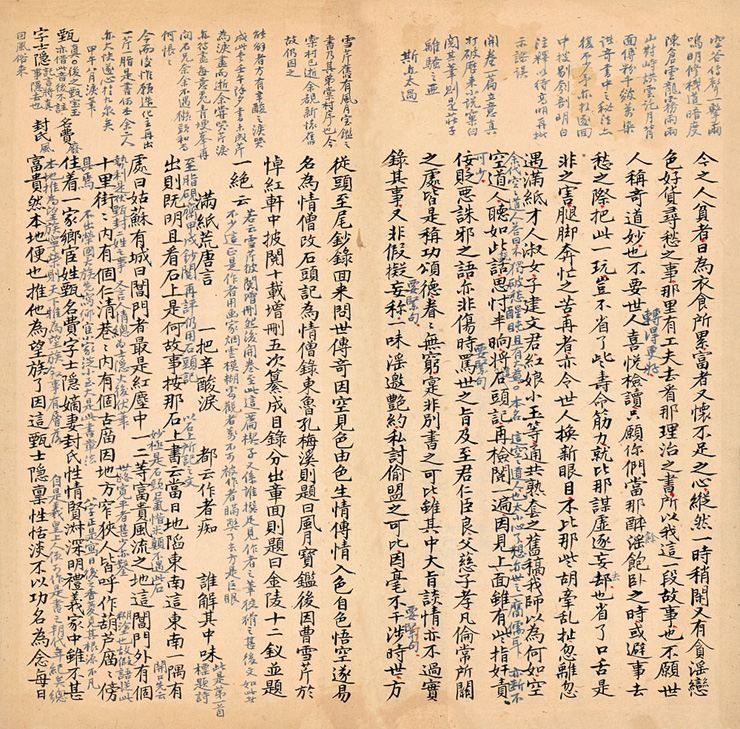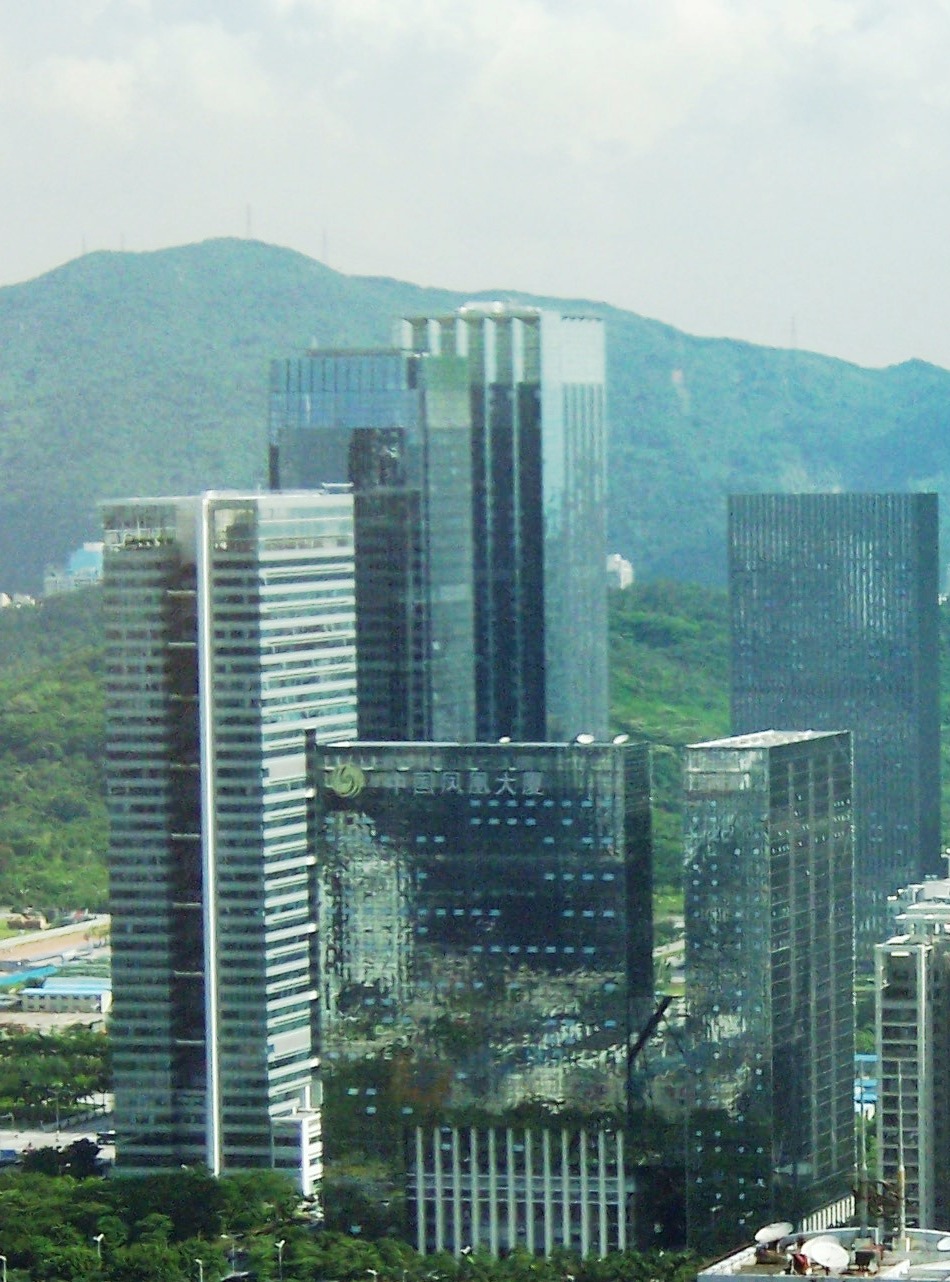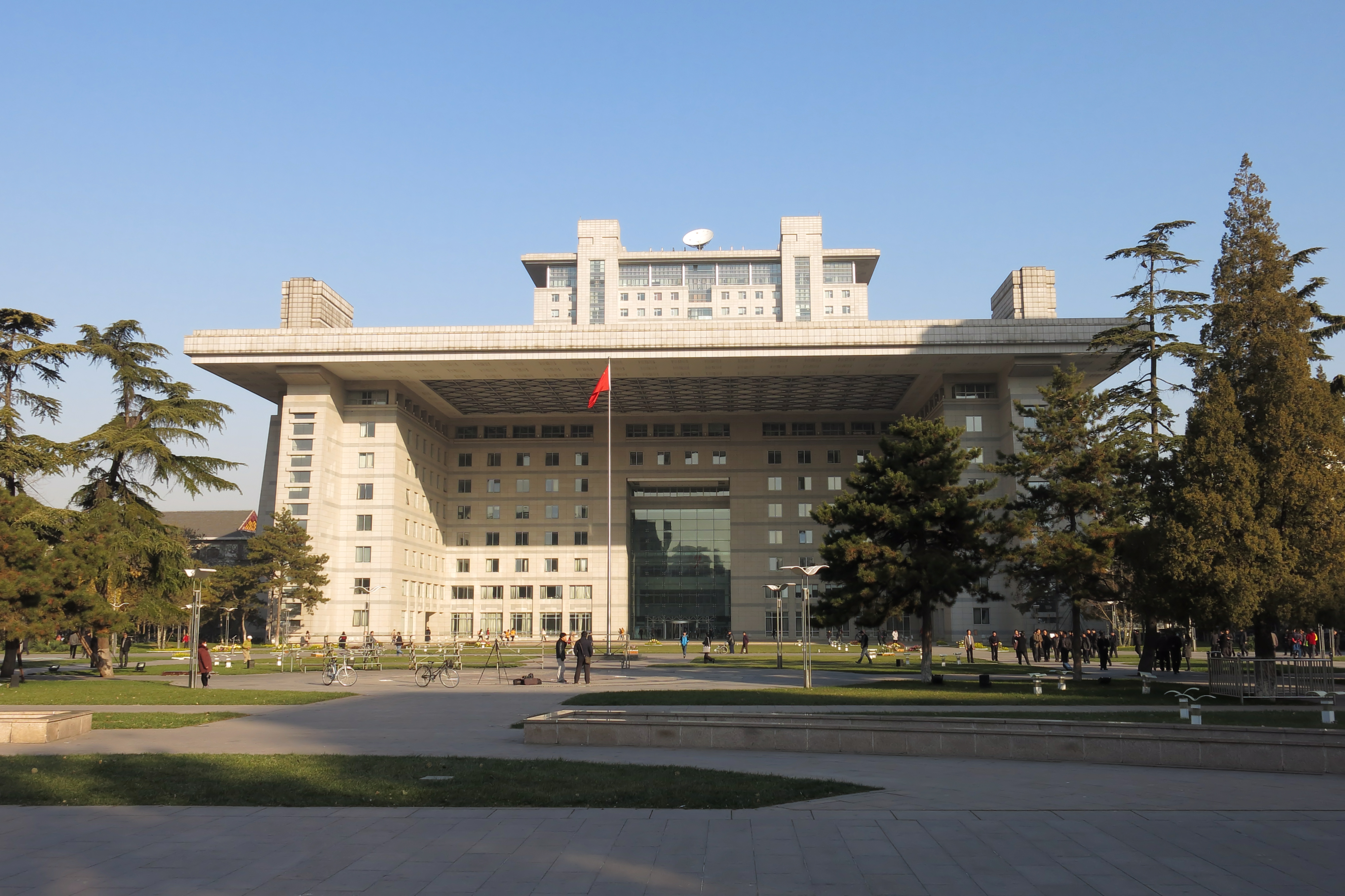|
Dream Of Red Chamber
''Dream of the Red Chamber'' (''Honglou Meng'') or ''The Story of the Stone'' (''Shitou Ji'') is a novel composed by Cao Xueqin in the middle of the 18th century. One of the Four Great Classical Novels of Chinese literature, it is known for its psychological scope, and its observation of the worldview, aesthetics, life-styles, and social relations of 18th-century China. The intricate strands of its plot depict the rise and decline of a family much like Cao’s own and, by extension, of the dynasty itself. Cao depicts the power of the father over the family, but the novel is intended to be a memorial to the women he knew in his youth: friends, relatives and servants. At a more profound level, the author explores religious and philosophical questions, and the writing style includes echoes of the plays and novels of the late Ming, as well as poetry from earlier periods. Cao apparently began composing it in the 1740s and worked on it until his death in 1763 or 1764. Copies of ... [...More Info...] [...Related Items...] OR: [Wikipedia] [Google] [Baidu] |
Cao Xueqin
Cáo Xuěqín ( ; ); (4 April 1710 — 10 June 1765)Briggs, Asa (ed.) (1989) ''The Longman Encyclopedia'', Longman, was a Chinese writer during the Qing dynasty. He is best known as the author of ''Dream of the Red Chamber'', one of the Four Great Classical Novels of Chinese literature. His given name was Cáo Zhān () and his courtesy name was Mèngruǎn (). Family Cao Xueqin was born to a Han Chinese clan that was brought into personal service (as ''booi aha'' or bondservants of Cigu Niru) to the Manchu royalty in the late 1610s. His ancestors distinguished themselves through military service in the Plain White Banner () of the Eight Banners and subsequently held posts as officials which brought both prestige and wealth. After the Plain White Banner was put under the direct jurisdiction of the Qing emperor, Cao's family began to serve in civil positions of the Imperial Household Department. During the Kangxi Emperor's reign, the clan's prestige and power reached its height ... [...More Info...] [...Related Items...] OR: [Wikipedia] [Google] [Baidu] |
Ifeng
Phoenix Television is a majority state-owned television network that offers Mandarin and Cantonese-language channels that serve mainland China, Hong Kong, Macau and other markets with substantial Chinese-language viewers. It is operated by Phoenix Satellite Television Holdings Ltd, a television broadcaster with headquarters in Mainland China and Hong Kong. It is also registered in Cayman Islands. The CEO and founder of Phoenix TV, Liu Changle (), was an officer and political instructor in the People's Liberation Army in its 40th Group Army. He later became a journalist for the Chinese Communist Party-controlled China National Radio after the Cultural Revolution and remains well-connected to the Party's leadership. Liu is a standing member of the National Committee of the Chinese People's Political Consultative Conference. Phoenix Television calls itself a Hong Kong media outlet but holds a non-domestic television programme services license in Hong Kong. Most of the company' ... [...More Info...] [...Related Items...] OR: [Wikipedia] [Google] [Baidu] |
Oxford University Press
Oxford University Press (OUP) is the university press of the University of Oxford. It is the largest university press in the world, and its printing history dates back to the 1480s. Having been officially granted the legal right to print books by decree in 1586, it is the second oldest university press after Cambridge University Press. It is a department of the University of Oxford and is governed by a group of 15 academics known as the Delegates of the Press, who are appointed by the vice-chancellor of the University of Oxford. The Delegates of the Press are led by the Secretary to the Delegates, who serves as OUP's chief executive and as its major representative on other university bodies. Oxford University Press has had a similar governance structure since the 17th century. The press is located on Walton Street, Oxford, opposite Somerville College, in the inner suburb of Jericho. For the last 500 years, OUP has primarily focused on the publication of pedagogical texts and ... [...More Info...] [...Related Items...] OR: [Wikipedia] [Google] [Baidu] |
David Dean Shulman
David Dean Shulman (born January 13, 1949) is an Israeli Indologist, poet and peace activist, known for his work on the history of religion in South India, Indian poetics, Tamil Islam, Dravidian linguistics, and Carnatic music. Bilingual in Hebrew and English, he has mastered Sanskrit, Hindi, Tamil and Telugu, and reads Greek, Russian, French, German, Persian, Arabic and Malayalam. He was formerly Professor of Indian Studies and Comparative Religion at the Hebrew University, Jerusalem, and professor in the now defunct Department of Indian, Iranian and Armenian Studies, and now holds an appointment as ''Renee Lang Professor of Humanistic Studies'' at the Hebrew University in Jerusalem. He is a member of the Israel Academy of Sciences and Humanities since 1988. Shulman is also a published poet in Hebrew, a literary critic, a cultural anthropologist. He has authored or co-authored more than 20 books on various subjects ranging from temple myths and temple poems to essays that ... [...More Info...] [...Related Items...] OR: [Wikipedia] [Google] [Baidu] |
Galit Hasan-Rokem
Galit Hasan-Rokem ( he, גלית חזן־רוקם, born 29 August 1945) is the Max and Margarethe Grunwald professor of folklore at the Mandel Institute of Jewish Studies at the Hebrew University of Jerusalem. Author and editor of numerous works, including co-editor of the Wiley-Blackwell ''Companion to Folklore'' (2012), her research interests include proverbs, folklore and culture of the Middle East, and folklore genres and narratives. She is also a published poet and translator of poetry, and a Pro-Palestinian activist. ''The Jerusalem Post'' has called her "a figure of some prominence in Jerusalem intellectual circles". Early life and education Galit Hasan-Rokem was born in 1945 in Helsinki to Jewish parents who were also natives of Finland. She attended the Helsinki Jewish day school from 1952 to 1957. In 1957, at the age of 12, she immigrated with her family to Israel. Following high school graduation, she completed her compulsory military service and enrolled in the Hebre ... [...More Info...] [...Related Items...] OR: [Wikipedia] [Google] [Baidu] |
Irene Eber
Irene Eber ( 1929 in Halle – April 2019; née Geminder) was an Israeli Orientalist. She was the Louis Frieberg Professor of East Asian Studies (emeritus) at the Hebrew University of Jerusalem at Jerusalem (Sinologist), and Senior Fellow of the Harry S. Truman Research Institute. She lived in Jerusalem. She was also a specialist in translations from Chinese. Works * ''Chinese and Jews: Encounters Between Cultures. '' Vallentine Mitchell & Co Ltd. 2007 * ''Chinese Tales. '' Introd. By Martin Buber, Transl. Alex Page. Humanity Books. 1998. * ''The Jewish Bishop and the Chinese Bible: S.I.J. Schereschewsky (1831–1906).'' Brill Academic Pub. 1999. 304 p. *'' Bible in Modern China. The Literary and Intellectual Impact.'' Steyler Verlagsbuchhandlung, 1999. With Nicolas Standaert, Arnulf Camps, and Jost Zetzsche. * ''Confucianism, the Dynamics of Tradition. '' Macmillan Library Reference. 1986 * ''Influence, Translation and Parallels. Selected Studies on the Bible in Chi ... [...More Info...] [...Related Items...] OR: [Wikipedia] [Google] [Baidu] |
Hu Shih
Hu Shih (; 17 December 1891 – 24 February 1962), also known as Hu Suh in early references, was a Chinese diplomat, essayist, literary scholar, philosopher, and politician. Hu is widely recognized today as a key contributor to Chinese liberalism and language reform in his advocacy for the use of written vernacular Chinese. He was influential in the May Fourth Movement, one of the leaders of China's New Culture Movement, was a president of Peking University, and in 1939 was nominated for a Nobel Prize in literature. He had a wide range of interests such as literature, philosophy, history, textual criticism, and pedagogy. He was also an influential redology scholar and held the famous Jiaxu manuscript () for many years until his death. Biography Early life Hu was born on December 17, 1891, in Shanghai to Hu Chuan () and his third wife Feng Shundi (). Hu Chuan was a tea merchant who became a public servant, serving in Manchuria, Hainan, and Taiwan. After Hu Shih's birth, Hu ... [...More Info...] [...Related Items...] OR: [Wikipedia] [Google] [Baidu] |
Institute Of Oriental Studies Of The Russian Academy Of Sciences
The Institute of Oriental Studies of the Russian Academy of Sciences (russian: Институт востоковедения Российской Академии Наук), formerly Institute of Oriental Studies of the USSR Academy of Sciences, is a Russian research institution for the study of the countries and cultures of Asia and North Africa. The institute is located in Moscow, and formerly in Saint Petersburg, but in 2007 the Saint Petersburg branch was reorganized into a separate Institute of Oriental Manuscripts. History The Institute of Oriental Studies of the Russian Academy of Sciences (RAS) history began in 1818, when an Asiatic Museum under the Imperial Academy of Sciences was set up in St. Petersburg. It was a depository of oriental manuscripts, a museum with exposition for visitors, a scientific and organizing center for oriental studies as well as a library for academic research. At the beginning of the 20th century, by the 100th anniversary of its foundation, ... [...More Info...] [...Related Items...] OR: [Wikipedia] [Google] [Baidu] |
Beijing Normal University
Beijing Normal University (BNU, ), colloquially known as Beishida (), is a public research university located in Beijing, China, with a strong emphasis on humanities and sciences. It is one of the oldest and most prestigious universities in China as part of Class A Double First Class University in the Double First Class University Plan and was designated by the Chinese Ministry of Education as a member of Project 985 and Project 211. "Normal school" refers to an institution that trained schoolteachers in the early 20th century. The title is preserved in the names of Chinese institutions after they developed into comprehensive universities. It also reflects BNU's heritage as a Faculty of Education member of the Imperial University of Peking which was established as China's first modern university. BNU ranked first among universities that originated as “normal schools”. The Faculty of Education is considered the best in China according to several widely cited international ran ... [...More Info...] [...Related Items...] OR: [Wikipedia] [Google] [Baidu] |
Peking University
Peking University (PKU; ) is a public research university in Beijing, China. The university is funded by the Ministry of Education. Peking University was established as the Imperial University of Peking in 1898 when it received its royal charter by the Guangxu Emperor. A successor of the older ''Guozijian'' Imperial College, the university's romanized name 'Peking' retains the older transliteration of 'Beijing' that has been superseded in most other contexts. Perennially ranked as one of the top academic institutions in China and the world; as of 2021 Peking University was ranked 16th globally and 1st in the Asia-Pacific & emerging countries by Times Higher Education, while as of 2022 it was ranked 12th globally and 1st in Asia by QS University Rankings. Throughout its history, Peking University has had an important role "at the center of major intellectual movements" in China. Abolished of its status as a royal institution after the fall of the Qing dynasty and the Xinhai R ... [...More Info...] [...Related Items...] OR: [Wikipedia] [Google] [Baidu] |
National Library Of China
The National Library of China (; NLC) is the national library of the People's Republic of China and is one of the largest libraries in the world. It contains over 41 million items as of December 2020. It holds the largest collection of Chinese literature and historical documents in the world and covers an area of 280,000 square meters. The National Library is a public welfare institution sponsored by the Ministry of Culture and Tourism. The collections of the National Library have inherited the royal collections since the Southern Song Dynasty and private collections since the Ming and Qing dynasties. The oldest collections can be traced back to the oracle bones of Yin Ruins more than 3,000 years ago. The National Library is a major research and public library, with items in 123 languages and in many formats, both print and digital: books, manuscripts, journals, newspapers, magazines, sound and music recordings, videos, play-scripts, patents, databases, maps, stamps, prin ... [...More Info...] [...Related Items...] OR: [Wikipedia] [Google] [Baidu] |
Shanghai Museum
The Shanghai Museum is a museum of ancient Chinese art, situated on the People's Square in the Huangpu District, Shanghai, Huangpu District of Shanghai, China. Rebuilt at its current location in 1996, it is considered one of China's first world-class modern museums and famous for its large collection of rare cultural pieces. History The museum was founded in 1952 and was first open to the public in the former Shanghai Racecourse club house, now at 325 West Nanjing Road. The founding collections came principally from three sources: a batch of artifacts gathered by the Communist 3rd Field Army during the civil war from accidental finds and confiscations of private property and brought to Shanghai upon the Communists' conquest of the city; artifacts confiscated by the customs service; items sold by private collectors due to political pressure during political purges and purchased by the government. The former Shanghai Municipal Museum was also merged into the new Shanghai Museum. I ... [...More Info...] [...Related Items...] OR: [Wikipedia] [Google] [Baidu] |


.jpg)



